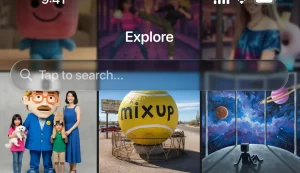Total Unemployment is Unavoidable*

100% Unemployment is Inevitable*
The Rising Impact of AI on Knowledge-Worker Employment
Artificial Intelligence (AI) is already contributing to rising unemployment rates in knowledge industries, sparking debates around the possibility of large-scale job displacement. Particularly concerning is the prospect that if AI continues its rapid progression toward Artificial General Intelligence (AGI), certain knowledge-worker roles may face up to 100% unemployment. Proponents of this view argue that AI can perform tasks better, faster, and cheaper than humans. However, counterarguments highlight economic frictions and historical precedents that suggest a total job loss scenario is far from inevitable.
Current Unemployment Trends: Early Signs of AI Impact
Recent data indicate a noticeable rise in unemployment in sectors heavily exposed to automation, such as professional services, healthcare analytics, and administrative support. Although overall unemployment rates remain low, these specific industries are experiencing significant job losses and slower rehiring processes. Entry-level positions, often the first to be automated, show the steepest declines, with youth unemployment reflecting recession-like levels worldwide.
The Federal Reserve has correlated rising unemployment rates in roles tied closely to generative AI. For instance, from 2022 to 2025, fields like software and finance exhibited increasing unemployment, suggesting that AI’s integration into workflows may signal structural displacement rather than mere cycle fluctuations.
Steelman Argument: AI’s Immediate Effects on Employment
Data suggests that AI is already displacing jobs in the most vulnerable sectors. The U.S. unemployment rate reached 4.4% in September 2025, with considerable job loss in AI-exposed fields. Youth unemployment is hitting recession levels globally, indicating that entry-level positions are rapidly diminishing due to AI integration. These trends might be a precursor to more significant job losses in the future, indicating that early signs of displacement align with anticipated patterns of total automation.
Strawman Argument: Contextualizing Unemployment Data
Critics argue that unemployment data can be noisy and influenced by multiple factors, such as changing economic conditions. Many of the affected industries were experiencing downturns before the advent of generative AI. In fact, other socio-economic factors, like demographic shifts and mismatches in educational opportunities, contribute to rising youth unemployment. Thus, one should exercise caution before attributing current job losses to the rise of AI alone, viewing it as a complex interplay of various factors rather than a simple cause-and-effect scenario.
The Accelerating Role of AI in Job Displacement
As generative AI systems become integrated into daily business operations, companies increasingly deploy them to automate tasks traditionally managed by knowledge workers. This trend is evident in customer service, finance, tech, marketing, and legal sectors, where AI can now draft documents, summarize data, generate content, and more.
While some companies use these tools to augment employee capabilities, others are actively replacing or downsizing their hiring pipelines. This leads to a critical question: Are these changes indicative of a temporary restructuring phase or a looming shift toward widespread, permanent job loss in white-collar sectors?
Steelman Argument: Rapid Job Elimination
In 2025 alone, approximately 76,000 jobs in the U.S. were lost to AI, including over 10,000 white-collar roles. Companies like JPMorgan and IBM openly declare intentions to replace human roles entirely with AI. Predictions suggest that 50% of entry-level white-collar jobs might vanish within 1-5 years. AI primarily targeting cognitive labor challenges the common notion that such jobs are safe from automation.
Strawman Argument: AI and Task Displacement
Critics maintain that while AI may be displacing specific tasks, it does not eliminate entire jobs. Knowledge roles often encompass uniquely human attributes—creativity, ethics, and interpersonal interactions—that AI cannot replicate. Furthermore, the incorporation of AI into workplace processes frequently leads to productivity gains without the need for significant workforce reductions.
The Trajectory Toward AGI: A Game-Changer for Employment
As AI systems evolve from narrow applications to generalized reasoning capabilities, the debate surrounding the arrival of AGI intensifies. Some forecasts speculate that AGI could emerge in the 2030s, posing profound questions about its impact on human employment in knowledge sectors.
Steelman Argument: AGI as a Catalyst for Unemployment
AGI, by definition, can perform any intellectual task a human is capable of, and experts warn that this could lead to the obliteration of millions of jobs. If AGI can replace human cognition entirely, economic logic dictates that firms will choose AI over human labor, potentially resulting in near-total job loss in affected sectors.
Strawman Argument: Uncertainty Surrounding AGI
Skeptics argue that predicting AGI is fraught with uncertainty. The timelines for AGI development remain vague, and even if AGI emerges, it may not entirely replace the human element, necessitating human oversight in many domains. Historical lessons also remind us of various technologies that initially upended job markets but eventually led to the creation of new roles and industries.
Economic Dynamics and the Adaptation Challenge
Historically, technological advancements result in job displacement but are often counterbalanced by the creation of new opportunities. Yet, some experts suggest that AI’s unprecedented speed and scale in automating cognitive tasks might outpace traditional labor market adaptations.
Steelman Argument: Limitations of Adaptation
AI’s rapid capacity to automate cognitive functions could overwhelm the labor market’s ability to adapt. The structural changes and job losses may take entire local economies with them, making it difficult for displaced workers to find new opportunities in the same industries.
Strawman Argument: The Resilience of Labor Markets
However, history shows that economies tend to expand even amidst job automation. The adaptation mechanism allows for the emergence of new roles as creative human-centered tasks gain more importance. Governments may aid this transition through retraining programs and regulatory measures, thus helping to cushion the blow of job losses.
Jevons Paradox: The Case for Increased Demand in Knowledge Work
Jevons Paradox suggests that when technology significantly increases efficiency, total consumption of that technology often rises rather than falls. Though at first, AI may appear ready to eliminate human roles, it could instead amplify demand for knowledge work, presenting new opportunities for human workers.
Steelman Argument: AI as a Demand Amplifier
If AI makes knowledge work cheaper, organizations might engage in more projects, thus creating roles in oversight and other specialized areas. The increased feasibility for producing various outputs may lead companies to require human expertise in areas that AI cannot fully automate, thereby preserving or even expanding job opportunities.
Strawman Argument: Limitations of Jevons Paradox
Critics contend that Jevons Paradox applies only when humans are indispensable in the production process. If AI achieves full autonomy within knowledge workflows, the increased efficiency may not benefit human workers as machines outperform and replace them entirely.
Conclusion: Navigating the Future of Knowledge Work in an AI-Driven World
AI is reshaping the modern labor market at an unprecedented speed, especially in knowledge sectors. While evidence supports the notion that AI could lead to significant job displacement, many variables—historical precedents, human adaptability, and policy interventions—suggest that outcomes are not predetermined.
The future may not strictly lean toward total unemployment nor unbridled prosperity. Instead, we find ourselves at a pivotal moment where choices made by governments, businesses, and individuals will significantly impact whether AI serves as a tool for collective human advancement or as a mechanism that exacerbates inequality while rendering many roles obsolete.
Thanks for reading. Please let us know your thoughts and ideas in the comment section down below.
Source link
#Unemployment #Inevitable





